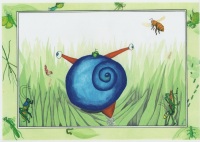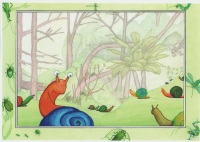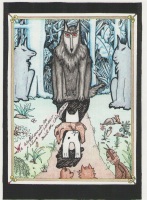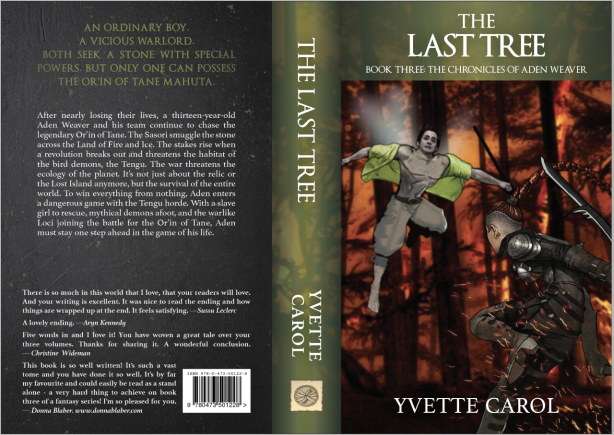It’s time for another group posting of the Insecure Writer’s Support Group! Time to release our fears to the world – or offer encouragement to those who are feeling neurotic. If you’d like to join us, click on the tab above and sign up. We post the first Wednesday of every month. I encourage everyone to visit at least a dozen new blogs and leave a comment. Your words might be the encouragement someone needs.

Every month, the organisers announce a question that members can answer in their IWSG Day post. Remember, the question is optional!!!
May Question: What is the weirdest/coolest thing you ever had to research for your story?
A colleague from Toastmasters referred to the series I’m writing as “magical realism” the other day, which I thought was a good description. I like to write of other worlds which are nevertheless based on Earth. For the upper middle grade series I’m writing currently, the Chronicles of Aden Weaver, the characters are shape shifting insects. For this, I did research on the insect world, read up on some Maori and Japanese myths, and I read about Albatrosses, and I loved every minute of it.

When I first started out as a young writer, I used to be embarrassed of my “talking animals stories” because most people, especially publishers at the time, disregarded them. However, the popularity of fantasies about animals can be traced back to Aesop’s fables and beyond. Our fascination with them goes through Greek literature and can be seen echoed in fables from other cultures such as India, through the “beasts as spokespeople” of medieval writers, to Lewis Carroll’s Alice in Wonderland, to The Jungle Book and The Wind in the Willows. It’s a “live” sub-genre of fantasy.
“As a critical term, ‘fantasy’ has been applied rather indiscriminately to any literature which does not give priority to realistic representation: myths, legends, folk and fairy tales, utopian allegories, dream visions, surrealist texts, science fiction horror stories…” ~ Rosemary Jackson, Fantasy, The Literature of Subversion

As they say in The Ultimate Encyclopaedia of Fantasy, “One of the problems in any discussion of fantasy is to decide just where ‘realistic’ ends and fantasy begins.” In the “variously fashionable sub-type” of magical realism, which is the strange grayish area of literature I inhabit, the realistic aspect of the story is balanced by the fantastical.
English comedian and writer, David Walliams said, “The only limits in a children’s book are your imagination.” This is exactly what I love about writing for children and the magical realism genre; they’re both about that freedom of spirit. I feel the sky’s the limit and that’s the way I want to feel when I write.

To achieve “realism,” I always do a bit of research for every book. So for this story about insect shape shifters, I read books, articles, watched documentaries about insects. My dragonfly characters have six legs and four wings. I feel that being able to include the facts gives credibility to the world we’re creating for our readers. Realism adds depth and complexity. It locks the reader in so that they can fly with us on our leaps of imagination. They feels safe with us to explore further.
Once your reader knows the facts, you can then build on that basis to amp up the tension when the norm breaks down.
For instance, there are albatross in this series. The albatross is a sea bird and I discovered it nests right on the coast when it comes ashore at all. Armed with this information, I was able to use this one simple fact to anchor and skew part of the story.

Because I write for children, who may not be aware of certain things, I needed to drop in a line of dialogue or two prior to this scene, to clue the young reader in to the way things should be, e.g. “Albatross should never nest far from the sea.” Then, by placing the enemy chief’s colony of albatross deep inland, far from water, this one simple anomaly gave the enemy compound an eerie, other-worldly, slightly “off-kilter” ambience that permeates the reader’s perception of the place from then on.
Without a doubt, the coolest thing about research so far has been the research itself, learning new things and supplying good sturdy foundations to the fantasy stories I write. It’s part of the work of being a writer and it’s fun!
How about you, what is your favourite part of what you do?

Talk to you later.
Keep on Creating!
Yvette K. Carol
+
Fantasy is the fiction of the heart’s desire. ~ Unknown
+
Subscribe to my Newsletter by emailing me with “Newsletter Subscription” in the subject line to: yvettecarol@hotmail.com
















Hello, Yvette. What a marvelous collection of illustrations! I’m not a big fan of YA literature (for my own reading–it’s certainly great for teens), but I love children’s picture books. It’s great that you’re able to educate your readers as you entertain them.
LikeLiked by 1 person
Hi, Rhonda,
thanks for stopping by and thank you for the compliment. I’m glad you like my illustrations. I have loads more, of course! 🙂 These are mostly from my earlier stories which were picture books. Is that the genre you write?
LikeLike
Fun tidbits, Yvette!
LikeLiked by 1 person
Thanks, Catherine! 🙂
LikeLike
Interesting. We seem to be quite similar, you and I;) I do share your taste about mythical creatures and such, and i too enjoy doing research for my stories. What I probably like the most, though, is the idea process. That’s probably why I enjoy making flash fiction so much, I get yo make up worlds, creatuers and stories all the time. My stories could almost be defined as children’s stories for grownups:)
LikeLike
Hello, Fictionspawn,
Sounds interesting. Coincidentally, I’ve just been reading articles about how to write flash fiction recently. Seems to be the way of the future! 🙂
LikeLiked by 1 person